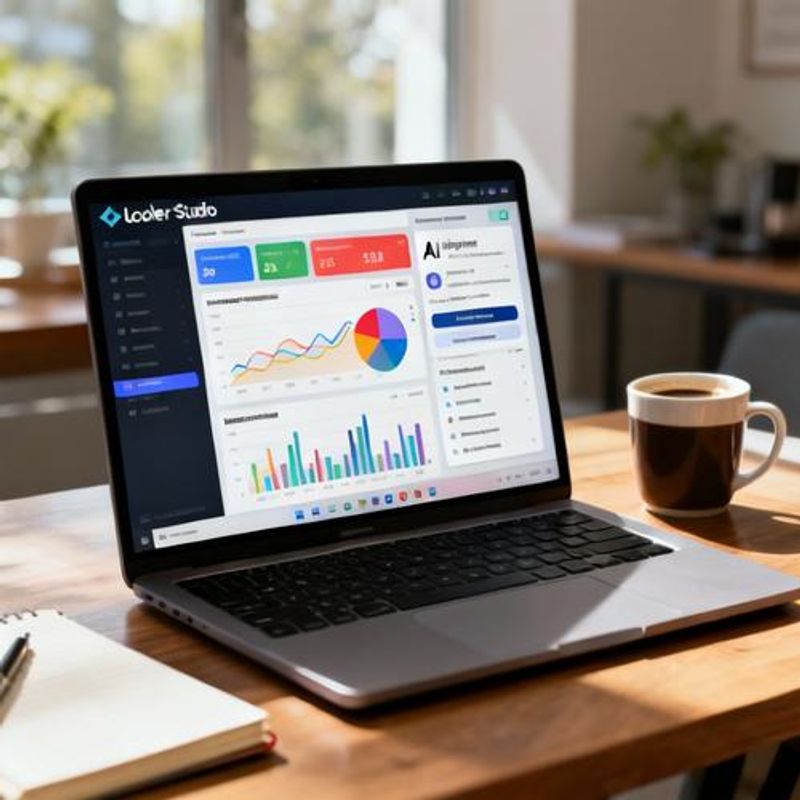AI Tools in Google for Data Analysts: Complete Guide to Boost Your Analytics Workflow

As a data analyst, you're constantly searching for ways to streamline your workflow and extract deeper insights from complex datasets. Google's ecosystem now offers a powerful suite of AI tools that can transform how you approach data analysis, from automated pattern recognition to predictive modeling. This comprehensive guide reveals exactly which AI tools in Google you should leverage to reduce manual work, improve accuracy, and deliver more impactful analysis to stakeholders.

Why Google's AI Tools Matter for Data Analysts
Data analysts face mounting pressure to deliver insights faster while managing increasingly complex datasets. Traditional analysis methods often consume 80% of your time on data preparation and cleaning, leaving little room for actual insight generation. Google's AI-powered tools address these core pain points by automating routine tasks, identifying patterns you might miss, and providing intelligent recommendations that accelerate decision-making. Whether you're dealing with web analytics, business intelligence, or predictive modeling, these tools integrate seamlessly into existing workflows while significantly expanding your analytical capabilities.
Quick Overview: Essential AI Tools in Google for Data Analysis
Google's AI ecosystem provides several powerful tools specifically designed to enhance data analysis workflows:
- Google Analytics Intelligence - Automated anomaly detection and natural language insights
- BigQuery ML - Machine learning models within your data warehouse
- Looker Studio with AI features - Intelligent data visualization and reporting
- Google Sheets with AI functions - Smart data processing and analysis
- Vertex AI platform - Custom machine learning model development and deployment

Google Analytics Intelligence: Your AI-Powered Insights Assistant
Google Analytics Intelligence transforms how you interact with web analytics data by providing natural language querying and automated insights. Instead of manually building reports, you can ask questions like 'What caused the traffic spike last Tuesday?' and receive immediate, contextualized answers. The tool continuously monitors your data for significant changes, alerting you to anomalies and trends that require attention. This proactive approach means you'll catch important patterns early, whether it's identifying high-performing content, detecting conversion issues, or spotting seasonal trends. The intelligence feature also provides automatic annotations for significant events, helping you understand the story behind your data without extensive manual investigation.
BigQuery ML: Machine Learning at Scale
BigQuery ML enables you to build and deploy machine learning models using familiar SQL syntax, eliminating the need to export data or learn complex programming languages. You can create predictive models for customer lifetime value, demand forecasting, or churn prediction directly within your data warehouse. The platform supports various model types including linear regression, logistic regression, k-means clustering, and time series forecasting. What makes this particularly powerful for data analysts is the ability to iterate quickly on models while keeping data secure and maintaining governance standards. The integration with Google's pre-trained models also allows you to add capabilities like sentiment analysis or entity extraction to your datasets with minimal effort.
Practical Implementation Examples
Here are specific ways to implement these AI tools in your daily workflow:
Customer Segmentation with BigQuery ML: Create a k-means clustering model to automatically segment customers based on behavior patterns. Use the SQL command: CREATE MODEL `project.dataset.customer_segments` OPTIONS(model_type='kmeans', num_clusters=5) AS SELECT customer_id, total_purchases, avg_order_value FROM customer_data;
Automated Reporting with Looker Studio: Set up intelligent alerts that notify you when key metrics deviate from expected ranges. Configure the AI to suggest chart types based on your data structure and analysis goals.
Smart Data Preparation in Google Sheets: Use the GOOGLETRANSLATE and DETECTLANGUAGE functions to clean multilingual datasets, or leverage the Explore feature to automatically generate charts and pivot tables based on your data patterns.

Common Pitfalls and How to Avoid Them
While Google's AI tools are powerful, several common mistakes can limit their effectiveness. First, avoid over-relying on automated insights without understanding the underlying methodology. Always validate AI-generated findings with manual spot checks and domain knowledge. Second, don't ignore data quality issues - AI tools amplify existing data problems, so ensure your source data is clean and properly structured. Third, be cautious about model overfitting in BigQuery ML by using proper train/test splits and cross-validation. Finally, remember that AI suggestions are starting points for investigation, not final answers. Always consider business context and external factors that the AI might not capture.
Next Steps: Implementing AI Tools in Your Analytics Workflow
Start by identifying your most time-consuming analytical tasks and mapping them to the appropriate Google AI tools. Begin with Google Analytics Intelligence if you're primarily focused on web analytics, or explore BigQuery ML if you need predictive capabilities. Set up a pilot project with a small dataset to familiarize yourself with the tools before scaling to production workloads. Consider joining Google's analytics community forums and completing their certification programs to deepen your expertise. Remember that these AI tools are designed to augment your analytical skills, not replace them - the most successful implementations combine AI automation with human insight and business understanding.